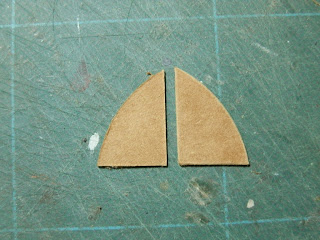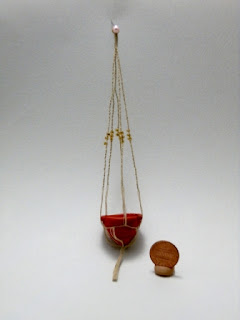Have I mentioned before that when I started this store, in 2008, I had very little experience in miniature making? From scratch, I mean... I did do some research, but I still had not incorporated the scale in me. So, all I cared about back then was that I didn't want to end up with a structure too big.
Puxa vida, como eu estava errada, e sob tantos aspectos!!! :) Agora eu teria optado por uma estrutura de dois andares, como já disse antes. Mas também notei algo errado com as portas...
Oh, how wrong I was, in so many levels!!! :) Now I would have opted for a two story structure, I've already said that, I know. But now I also knoticed something wrong with the doors...
É assim que as portas de lojas da época eram. Duas vezes mais altas que uma pessoa normal, como pode ver pelas fotos...
This is what doors from back then should look like. Twice as tall as the average person, as you can see from the pictures...
Na verdade o Angelo (professor de maquetes e miniaturas), que estava me orientando e ajudando na época, bem que queria fazer as portas consideravelmente mais altas, mas eu não quis. Eu achei que ficariam grandes demais. Mesmo assim, pensava em fazer como as da foto, com uma pequena 'janela' semicircular no alto. Nanina! Agora que já estou bem mais familiarizada com a escala, só de olhar já sabia que havia algo estranho para estes planos... Então, peguei "emprestado" uma porta pronta que tinha comprado e... encaixou na altura da abertura das portas! Daí que, se eu insistisse em fazer a tal "janelinha semicircular" no alto, conforme planejado, uma "pessoa" normal, em miniatura, não passaria pela porta de jeito nenhum! Ou eu teria que mudar o projeto todo para 1:24 ou mudar as portas. Escolhi a segunda opção...
 Well, Angelo, who was helping me back then, did want to make the doors much higher (taller?), but I didn't agree. I thought they'd be too big. But yet, I wanted to make them like the ones I saw in the pictures, with a little semi-circular window on the top, like a Palladian door. Nope! Now that I have a better feel on scale, I sensed something was off... So, I "borrowed" a ready-made door from HBS I have and... it fit! So, if I insisted on making it as planned, it would end up being too small for a 'regular' person to go trough. I'd either have to switch the whole project to half scale or change the door plans. I chose the second option...
Well, Angelo, who was helping me back then, did want to make the doors much higher (taller?), but I didn't agree. I thought they'd be too big. But yet, I wanted to make them like the ones I saw in the pictures, with a little semi-circular window on the top, like a Palladian door. Nope! Now that I have a better feel on scale, I sensed something was off... So, I "borrowed" a ready-made door from HBS I have and... it fit! So, if I insisted on making it as planned, it would end up being too small for a 'regular' person to go trough. I'd either have to switch the whole project to half scale or change the door plans. I chose the second option... Bem, então vamos lá!
So, off we go!
O primeiro passo foi medir as aberturas para as portas na estrutura. A partir disso, desenhei os moldes em papel. Usei um cortador/compasso para manter o topo circular. Depois usei os moldes para cortar as portas 3 vezes em papelão paraná, 6 vezes em papel duplex (o mesmo das caixas de cereal matinal) e 6 vezes em papel canson (alta gramatura, vendido em blocos nas melhores papelarias - é branco e tem uma textura interessante).
First step was to measure the openings in the structure. From that, I drew patterns on paper. I used a special cutter/dividers to keep the top circular. Then I used the patterns to cut the doors 3 times on hard cardboard (same as the one used to make shoe boxes), 6 times on a thinner cardboard (the same as the one used to make cereal boxes) and 6 times on canson paper (used by art students - it's thicker than regular paper and it has an interesting texture too).
Daí cortei os panéis internos da porta, na camada intermediária - que corresponde ao papel duplex. Mantenha um bom controle de qual painel pertence a qual 'porta', ou terá problemas depois para encaixar! E ficará feio, pois diferenças pequenas na hora de cortar vão fazer uma grande diferença no final.
Then I cut out the inner panels of the intermediate layer (the one that would correspond to the "cereal box" cardboard). Make sure you don't mix up the panels, as very slight differences might make a huge difference in the end.
Lixei as bordas de cada painelzinho para arredondar as arestas. Então usei a mesma 'porta' de onde os paineizinhos foram recortados como guia para colá-los no papelão paraná. Isto ajuda a posicionar cada um corretamente!
I sanded the removed panels, to make the edges more 'round'. Then I used the very same cardboard parts from where the panels were removed as a guide to glue the panels on the hard-cardboard doors. This helped me keep them in the right position, all the time.
I removed the remaining central parts, sanded the edges again and glued the outside part on each side of the forming doors.
Repeti o processo usando os moldes de novo, desta vez no papel canson.
I repeated the process using the patterns on the 'canson' paper too.
E aqui estão as portas, com todos os painéis cortados e colados no lugar!
And here you have the doors, all cut and glued in place!
E aqui, já pintadas - parecem mais com portas, não é? :) E só então é que eu cortei ao meio, fazendo as duas metades de cada porta.
Now painted too - it does start to look more like doors, right? :) And only then I cut them in the middle, making two half doors.
Hora de instalar as dobradiças. Importadas, aqui no Brasil não achei pequeninas assim. Recortei uma reentrância para encaixar a dobradiça para que ficasse nivelada com a lateral da porta. Colei com super-bonder. E depois usei alicates para inserir cada minúsculo preguinho (são 3 para cada lado da dobradiça!), passando um pouquinho de super-bonder na ponta para segurar melhor. Se não fizer isso, sai fácil!!
Time to apply the hinges. I cut a little bit to fit them into the sides of the doors. Then used super-glue to hold the hinge in place. And used pliers to insert the tiny little nails in the right places. I put a drop of super-glue on a piece of paper and smear the nail in them, before I insert them, just to help them hold better and longer. Those things are fragile!!!
Agora é a vez do batente. Medi o comprimento total da abertura e cortei longas tiras em papel duplex. 6 mm para o batente e 2 mm para a parte mais 'alta' que segura a porta. O importante é que a 'fatia' onde será instalada a dobradiça deve ter a mesma 'largura' (profundidade?) da porta, ou ela não fechará bem!
Time to make the door jamb and stop. I measured the length of each opening and cut long strips from the "cereal box" cardboard. About 1/4" for the door jamb and 3/32" for the stop. What is important is that the space where you'll place the hinge is the same width (depth?) of the door, or they won't close well!!
Colei e pintei as tiras...
Glued and painted the strips...
E puxei entre os dedos para dar um formato curvo no meio, que ficaria na parte superior da porta.
And pulled them between my fingers to 'coax' them into a curve on where they'd be on the top of the opening (middle of the strips).
Formam-se alguns 'calombinhos' no processo de curvar papel, sempre. A melhor forma de se livrar deles é pressionar para dentro. Usei a parte de trás da base de uma lixa de unha de metal. É feita para empurrar cutícula, mas a parte de trás é curva e firme o bastante para isso, perfeita!
Little 'bumps' always form when you curve paper. The best way to get rid of them was to press them back into place. I used the back of a metal nail file. Usually it's meant to push back cuticles on our nails, but the back is round, and it's perfect for that!
Entalhe as reentrâncias para as dobradiças nos batentes também e instale-as do mesmo modo como nas portas. Esta parte é a que menos gosto de fazer! Parece fácil olhando as fotos, mas é um processo lento e 'doloroso'. Virava a estrutura toda de um lado para o outro, usei objetos para manter a porta no lugar ao instalar as dobradiças, etc. E esses malditos preguinhos minúsculos insistiam em voar para longe, alguns nunca mais foram vistos... Palavrões foram ditos... Se alguém souber um jeito mais fácil de instalar essas mini dobradiças, pode compartilhar! :)
Cut a little bit where you'll place the hinges and place them as you did on the sides of the doors. This was my least favorite part so far! I know it seems easy-peasy from the pictures, but it's a slow and painful process. I turned the structure on the sides, used objects to hold each side of the doors in place while positioning and 'nailing' the hinges, etc. Those damn tiny nails flew away, some got lost and were never seen again... Names were called... If anyone knows of a better, faster and easier way to install hinges in miniature, please, do share! :)
Bem, depois de uma longa batalha com minúsculos preguinhos e dobradiças teimosas, partes da pintura que havia aplicado com spray nas dobradiças douradas (preto parece mais com ferro que dourado brilhante) saíram, é claro! Não podia aplicar spray de novo pois ia fazer muita bagunça. Para minha sorte, achei um esmalte de unha não só preto, mas também fosco! Eba! Usei um micro-pincel - do tipo usado pelos dentistas - para não ter que sacrificar um pincel ultra-fino nessa operação - e retoquei aqui e ali. Parece bom... :)
Well, after the long battle, some of the paint I had sprayed on the golden hinges to turn them black (like wrought iron) was, of course, gone!. I could not spray them again without risking making a big mess. Lucky me, I found a nail polish that is not only black, but matte! Yay! I used a micro brush - the kind dentists use all the time - so I wouldn't have to sacrifice a good 00 paintbrush on this - and re-touched here and there. Looks good enough... :)
Eu já tinha algumas fechaduras que havia comprado da Cia das Artes anos atrás (modelo MEF-10678), especialmente para este projeto, e colei no lugar somente depois que as portas já estavam instaladas, para mantê-las alinhadas - por algum motivo as portas parecem sempre se 'mover' um pouco durante o processo de instalação, não importa o cuidado que eu tenha... :(
I had some locks I had bought from Cia das Artes years ago (model MEF-10678), especially for this project, and glued them in position only after the doors were installed, to keep them well aligned - somehow the doors always seem to 'move' a little during the install process... :(
E assim ficaram as portas, finalmente instaladas: fechadas e abertas.
And these are the doors, finally installed: closed, and open.
 |
| Obrigada! Thank you! |

























































